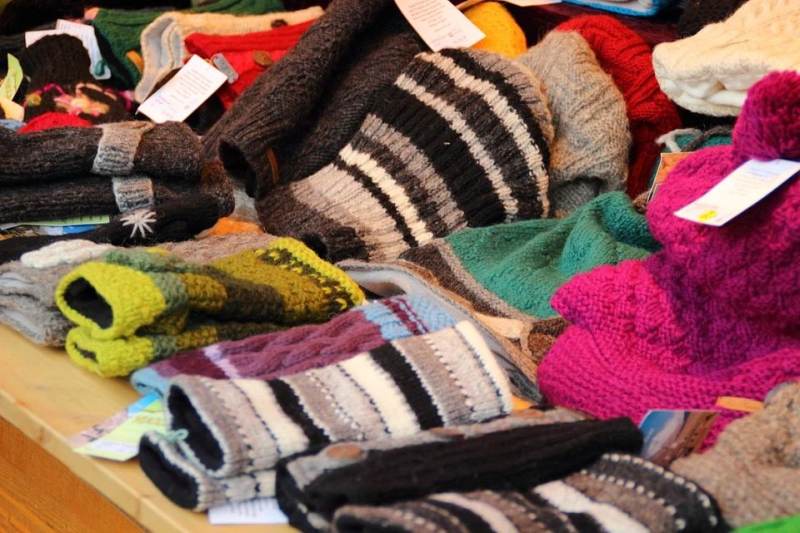For most people, hiking represents everything that has to do with reconnecting with nature and the power of being in complete freedom to go where you want to go like our primal ancestors once did. However, while exploring the landscapes we spend our time in, hikers like you and me get to witness firsthand all of the negative impacts of pollution and environmental degradation that humans, whether they are individuals or corporations, are capable of doing.
The clothing industry, in and of itself, is responsible for up to 10% of the global greenhouse gas emissions figure – this is due to the unbelievably long supply chains and energy-intensive production involved in making a piece of clothing from fabric to finished product on the shelves of retailers worldwide. 20% of the global wastewater comes from the clothing industry, and 85% of textiles eventually end up in landfills or burnt in industrial trash incinerators when they could be recycled or upcycled.
The outdoor clothing industry
Unlike fast fashion, outdoor clothing brands have to fight for market share based mainly on the features of their products – whether they are waterproof, windproof, weatherproof, moisture-wicking – the list goes on. In urban city landscapes, technical wear has seen a rise in popularity these days, and are a paradigmatic example of how outdoor clothing should fit and perform, no matter the weather condition.
However, to get the most function from a piece of outdoor clothing, manufacturers have to heavily rely on synthetic fabrics that are engineered in labs. Synthetic fabrics like polyester, nylon and spandex are popular options that provide the perfect amount of fit, form, and function required to produce outdoor gear that can withstand all the elements of mother nature. But with all the good that synthetic fabrics have to offer, they come at a significant cost.
Synthetic fabrics explained
Synthetic fabrics are essentially plastic, much like the plastic bags that are used to carry groceries or shopping. Although they might have a different texture and form when used in clothing, the core material remains the same – a petroleum-based material that can be shaped, wrung, spun and manipulated into fibers to be used in clothing. And petroleum is a non-renewable carbon resource that is responsible for most of the pollution that is happening in the world today.
If you’ve ever seen words like polyester, nylon, and spandex on clothing labels, that’s because they are the most common and most popular types of synthetic materials used in not only outdoor clothing manufacturing, but the entire clothing manufacturing industry worldwide. Polyester, in fact, is the most used fiber in the world for clothes making, providing material for up to 50% of the world’s clothing. It also takes more than 70 million barrels of oil per year to produce – which is a significant number, to say the least.
Another issue with synthetic clothing is that of microplastics. Whenever a synthetic garment is washed, it sheds microplastics that ends up in the wastewater from the washing machine. To make things worse, these microplastics come as invisible microfibers that pass through sewage plants that do not have the facilities to filter them out. The microplastics then ultimately end up in the world’s oceans and water supplies eventually causing harm to aquatic life in the long-term.
Synthetic vs natural fabrics
Natural fabrics are, as the name suggests, derived from natural materials. Some examples of natural fabrics include ubiquitous cotton, silk, leather, down, and wool. Ever since the dawn of civilization humans have used natural fabrics to clothe themselves, and one of the best things about natural fabrics is the fact that they are 100% biodegradable as they break down in the earth and soil.
In recent years, scientists have found ways to recycle synthetic fabrics, but they require a lot more effort to recycle into other products. Although this might seem like a good thing, considering all the chemical processing involved in its initial manufacturing stages and during recycling efforts, the net emissions go back to being positive, with no significant changes whatsoever on the figures.

Which natural fabrics keep you warm and dry?
Being in the great outdoors requires you to put on clothing that is durable, rugged and protects you from the elements while being lightweight and comfortable. Here are some of the best natural fabrics you can use instead of synthetics when you’re planning to spend time exploring mother nature.
1. Hemp
Hemp is made from the cannabis plant, which is where – you guessed it – the marijuana drug comes from. However, these are completely different substances as there are no traces of the THC (which is the controlled, high-causing chemical found in marijuana) in hemp fibers whatsoever. Hemp requires no pesticides at all to grow and is strong, yet soft to the touch. It also has thermoregulation abilities which keeps you cool and warm in whichever situation, making it great as a base layer overall.
2. Leather
Leather is great for use in hiking boots and gloves, as it is naturally waterproof and keeps out wind chill from reaching your extremities. However, look for leather products with sustainable production certification like the Leather Working Group which tells you that the garment was produced with sustainable water, energy, and chemical consumption.
3. Down
Down is one of the most efficient insulating materials used in sleeping bags and in jackets, providing a significant level of warmth at a much lighter weight than other insulating materials. It also lasts longer, meaning you get more value for what you pay for. However, there are some ethical issues involving down sourcing, as some manufacturers have been accused of live-plucking down feathers from ducks, which causes distress and is akin to animal cruelty. Look for ethically sourced down garments from companies that are involved in organizations like RDS (Responsible Down Standards).
4. Wool
Most people associate warmth with wool, and for good reason. Wool is derived from the shaggy coats on sheep, and it is by far one of the best biodegradable natural fabrics to stay warm and dry when outdoors due to its natural water-resistance and breathable qualities. In recent years, Australian merino wool has become increasingly popular owing to its natural anti-odor, antibacterial, fire retardant, and hypoallergenic qualities.
References
terradrift.com/sustainable-fabric-facts-sustainable-hemp-clothing-for-the-outdoors/
recloseted.com/blog/natural-vs-synthetic
besthiking.net/sustainable-outdoor-clothing-materials/
ultralightoutdoorgear.co.uk/ethical-down-i395
urban-merino.com/merino-wool/


